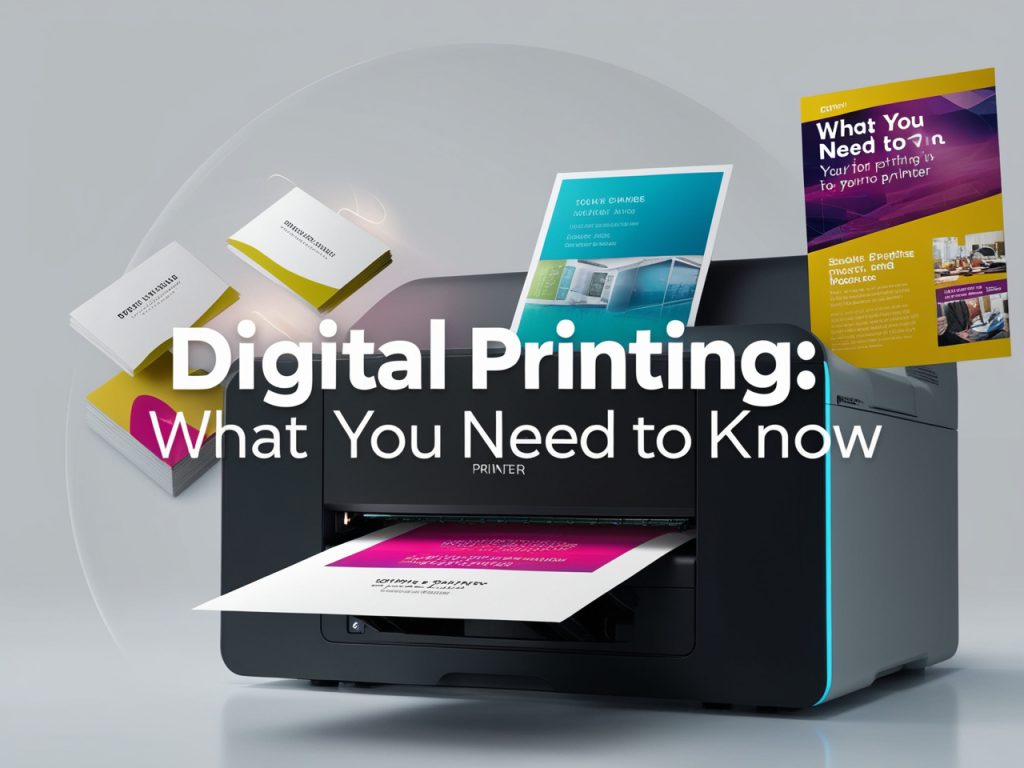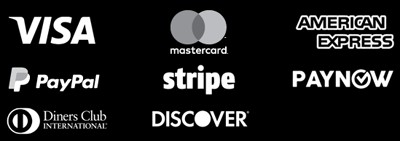
Digital printing has revolutionized the printing industry by offering faster, more cost-effective solutions for producing high-quality printed materials. Whether you’re printing business cards, brochures, posters, or customized promotional items, digital printing provides flexibility, speed, and excellent image reproduction. This guide will give you a comprehensive overview of how digital printing works, its benefits, and when it’s the right choice for your project.
1. What is Digital Printing? #
Digital printing is a modern method that involves printing digital files, such as PDFs or image files, directly onto a variety of substrates (paper, card, vinyl, fabric, etc.). Unlike traditional offset printing, which requires printing plates, digital printing transfers images from digital files directly to the printing medium, offering a more streamlined and efficient process.
How It Works: #
- Direct Printing: In digital printing, files are sent directly from a computer to the printer, which prints the image or text using inkjet or laser technology.
- No Printing Plates: Digital printing eliminates the need for physical printing plates, which reduces setup time and costs.
- Variable Data Printing (VDP): Digital printing allows for easy customization of each print, such as changing names or addresses, making it ideal for personalized printing projects.
2. Advantages of Digital Printing #
Digital printing offers several advantages over traditional printing methods like offset or screen printing, making it a preferred option for many businesses.
1. Cost-Effective for Small Runs #
- Why It’s Important: Digital printing is more cost-effective for small quantities because there are no setup fees for printing plates. This makes it the perfect choice for short-run printing jobs, where you only need a limited number of copies.
- Best For: Small to medium print runs such as business cards, flyers, brochures, or personalized invitations.
2. Fast Turnaround Time #
- Why It’s Important: Since digital printing doesn’t require time-consuming setup, projects can be printed and delivered faster than with traditional printing methods. Once the file is prepared, printing can begin almost immediately.
- Best For: Urgent print jobs, last-minute marketing materials, or event promotions that need a quick turnaround.
3. High-Quality Output #
- Why It’s Important: Digital printing offers sharp, vibrant images with excellent color accuracy. This makes it ideal for detailed designs, high-resolution photographs, and professional-quality documents.
- Best For: Projects that require high-definition images, such as photo prints, posters, or marketing collateral.
4. Customization with Variable Data Printing #
- Why It’s Important: One of the key advantages of digital printing is the ability to personalize each printed piece. With Variable Data Printing (VDP), you can customize individual pieces with different text or images, such as personalized names, addresses, or offers.
- Best For: Direct mail campaigns, personalized invitations, or promotional materials that require customization.
5. Environmentally Friendly #
- Why It’s Important: Digital printing produces less waste than traditional methods because there are no printing plates, less ink waste, and fewer chemicals used in the process. This makes it a more environmentally conscious option.
- Best For: Businesses looking to reduce their environmental impact while still producing high-quality prints.
3. Types of Digital Printing #
There are two primary types of digital printing: inkjet and laser. Both have their advantages and are suitable for different kinds of projects.
1. Inkjet Printing #
Inkjet printing works by spraying tiny droplets of ink onto the paper. It is capable of producing high-resolution images with smooth gradients, making it perfect for photo printing and vibrant color designs.
- Best For: Photo printing, posters, marketing brochures, and high-quality color projects.
- Advantages:
- Superior color saturation and detail.
- Can print on a variety of substrates, including paper, canvas, and vinyl.
- Ideal for short-run or on-demand printing.
- Drawbacks:
- Slower printing speed for high-volume jobs.
- Higher ink costs compared to laser printing.
2. Laser Printing #
Laser printing uses a laser beam to transfer toner (a fine powder) onto paper, which is then fused to the paper using heat. Laser printing is fast and cost-effective, especially for text-heavy documents and high-volume jobs.
- Best For: Text-heavy documents, reports, brochures with simple designs, or high-volume black-and-white printing.
- Advantages:
- Fast printing speed, making it ideal for high-volume jobs.
- Lower cost per page for black-and-white printing.
- Crisp, clean text and lines.
- Drawbacks:
- Less vibrant colors compared to inkjet.
- Limited substrate options compared to inkjet printing.
4. Best Applications for Digital Printing #
Digital printing offers versatility and is ideal for a wide range of printed materials. Here are some of the most common applications:
1. Business Cards #
- Why Digital Printing Works: Quick, affordable, and customizable. Digital printing allows you to print small batches of business cards and even personalize each card with a unique name or title if needed.
- Benefits: High-quality finishes with options for matte, gloss, or soft-touch lamination.
2. Brochures and Flyers #
- Why Digital Printing Works: Perfect for marketing collateral such as brochures and flyers. Digital printing allows for vibrant colors and sharp text, whether you’re printing 50 or 500 pieces.
- Benefits: Short-run printing makes it ideal for smaller businesses or those with limited promotional budgets.
3. Posters and Banners #
- Why Digital Printing Works: Digital printing handles large-format printing effectively, making it ideal for creating eye-catching posters, banners, and signage.
- Benefits: High-resolution printing ensures that even large prints look crisp and professional.
4. Direct Mail and Postcards #
- Why Digital Printing Works: Digital printing’s ability to handle variable data makes it perfect for direct mail campaigns where each piece needs to be personalized with different addresses or offers.
- Benefits: Personalization increases engagement and response rates.
5. Invitations and Event Materials #
- Why Digital Printing Works: Whether it’s a wedding invitation or corporate event material, digital printing provides high-quality, customizable prints at a reasonable cost.
- Benefits: Allows for personalized invitations, RSVPs, or event programs with the option to print small quantities without setup costs.
5. Cost Considerations #
Digital printing offers significant cost advantages for certain projects, especially for small runs or highly customized materials.
Cost Advantages: #
- No Setup Fees: Since digital printing doesn’t require printing plates, there are no initial setup costs, making it more affordable for short print runs.
- Short-Run Printing: Digital printing is cost-effective for small to medium quantities, as there is no minimum order requirement.
- Personalization at No Extra Cost: With variable data printing, you can personalize each print without additional costs for customization.
Cost Disadvantages: #
- Higher Cost Per Unit for Large Runs: For very large print runs, offset printing may be more cost-effective as the per-unit cost decreases significantly with higher quantities.
6. When to Choose Digital Printing #
Here’s when digital printing is the best choice for your project:
Choose Digital Printing If: #
- You Need a Quick Turnaround: Digital printing is faster than traditional methods, making it ideal for last-minute projects or short deadlines.
- You’re Printing Small Quantities: If you only need a few dozen or a few hundred copies, digital printing offers a cost-effective solution without the need for large minimum orders.
- You Need Customization: If your project requires variable data, such as personalized names, addresses, or offers, digital printing allows for easy customization.
- You Want High-Quality, Full-Color Prints: For high-quality images, photos, or graphics, digital printing delivers crisp, vibrant results.
- You Have a Limited Budget: Digital printing eliminates setup fees, making it an affordable choice for small print runs and businesses with limited budgets.
Consider Offset Printing If: #
- You’re Printing Large Quantities: For large print runs (typically over 1,000 copies), offset printing may offer better cost savings.
- You Need Specific Inks or Finishes: Offset printing offers more options for specialty inks (like metallics or Pantones) and finishes.
Conclusion #
Digital printing offers a flexible, fast, and cost-effective solution for producing high-quality printed materials. Whether you need small quantities, personalized prints, or a quick turnaround, digital printing can meet your needs while delivering excellent image quality. From business cards to brochures, digital printing’s versatility makes it the go-to choice for many businesses and individuals looking for professional printed products without the high setup costs associated with traditional printing methods.
You can find free business card templates on Freepik.
Learn more about the different printing methods in this comprehensive guide.





